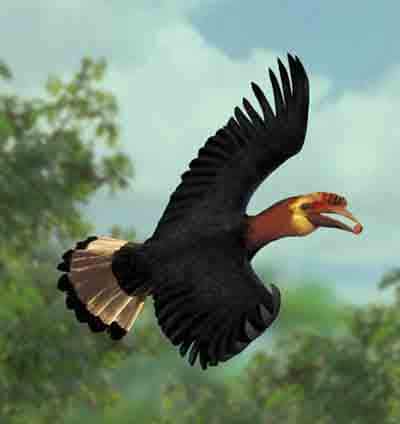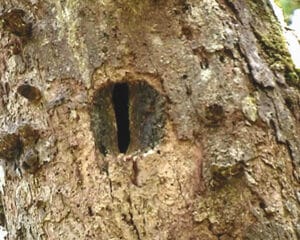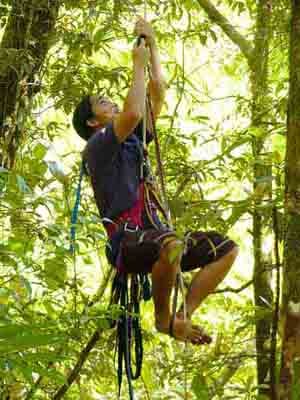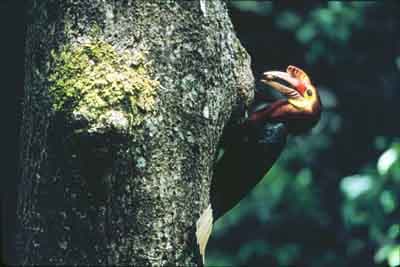Nest guarding of endangered hornbills
Guarding of Nests
To cope with nest poaching in endangered bird species such as Philippine hornbills, guards and community conservationists are being hired.
To cope with nest poaching in endangered bird species such as Philippine hornbills, guards and community conservationists are being hired.
| our Aim |
We intend to stabilise and enlarge the population of endangered Walden’s Hornbills by stopping nest poaching.
The larger endemic bird species’ last refuges are the forest remnants of Panay. Aside from illegal logging, the birds are threatened by hunting for fun, for dinner as well as by nest poaching for the pet market. Victims of their threats are, e.g., the Walden’s hornbill/Dulungan (Rhabdotorrhinus waldeni) and the Visayan hornbill (Penelopides panini). A few years ago, half of all Dulungan breeds were affected by nest poaching. To save the breeds, nest guarding was installed at both the community level (with incentives paid to the whole of the community) and the individual poacher-turned-nest guard level. Scrutinizing the markets aimed at drying out the pet trade with hornbills and other birds.



| Our activities |
We established a programme for nest protection where nests of Walden’s Hornbills are on the lookout and frequently checked.
It was only after PhilinCon’s implementation of a rigorous nest protection scheme that the rate of nest poaching went from over 50% to below 5%. An ever-increasing number of active Dulungan nests was found and protected in the subsequent years. Market raids by project devotees and staff and educational campaigns significantly diminished the market in the Northwest and North Panay.
| project costs |
To cope with nest poaching nest guards and community conservationists were hired, receiving a monthly payment of 20 USD/month and a nest incentive of 11 USD per saved nest.
| project duration |
All active nest holes are being located in a pre-breeding assessment. In a post-breeding assessment, fledgling success is monitored by specialists. These people are experienced in detecting the slightest traces of poachers who climbed a nest tree and broke open the hole before fleeing from the young. With a stunning high of more than 1,000 Dulungan nest holes, the manpower available has almost reached a ceiling unless more funds can be raised for protecting the remaining nest holes.
